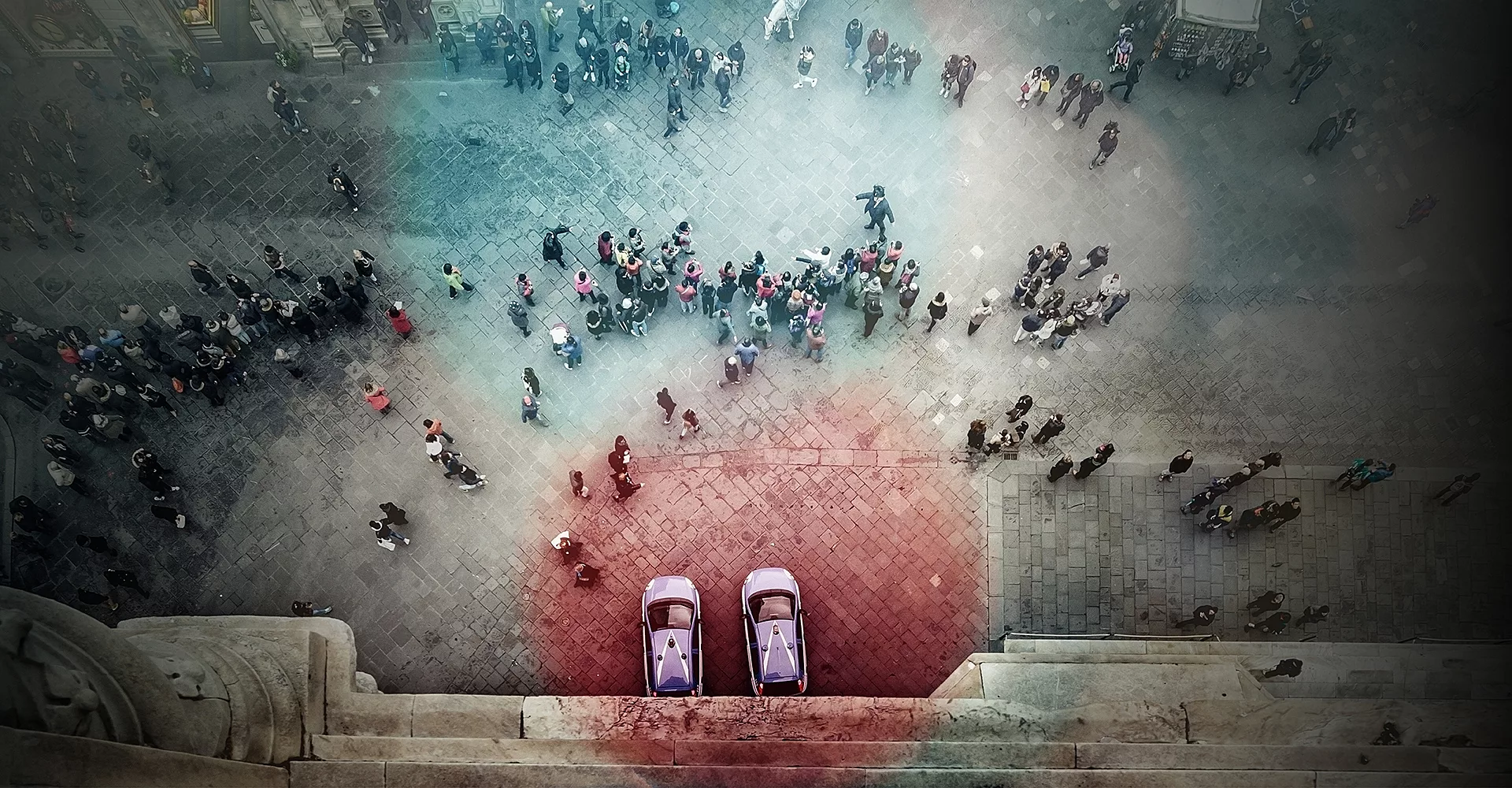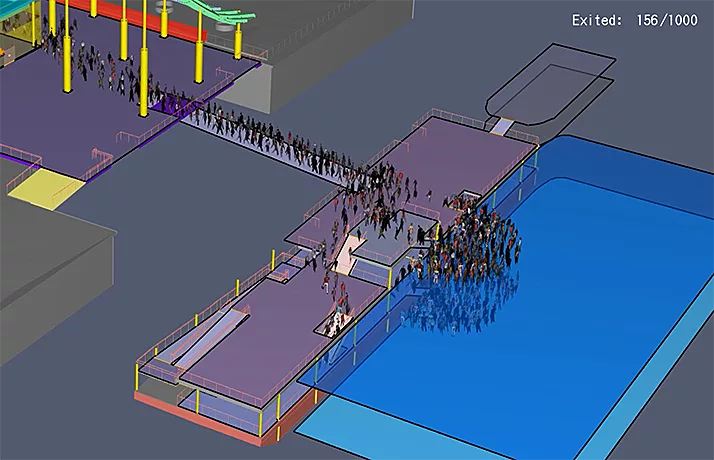
Pedestrian + Evacuation Modeling
Predicting human behavior to help save lives in an emergency

Pedestrian Modeling
Predicting pedestrian behavior and how queues influence occupant behavior can help inform your design. Our pedestrian modeling tools help you assess the occupant movement in new buildings and existing facilities. You will be able to simulate a range of scenarios with varying origins and destinations and complex connection paths. Our visual 3-D tools help you alleviate pinch points and optimize efficiency, providing an effective circulation network.

Evacuation Modeling + Performance-Based Design
It's important to understand how people move in emergency events. We use computational evacuation models that provide 3D simulations as well as a variety of movement and congestion data. We use this data to assess the adequacy of an egress design, examine alternative architectural design and security screening activities. We identify critical events, informing our approach toward performance-based design. We also use these models within the context of emergency preparedness to evaluate severe weather, bomb threat, active shooter and other emergency events.

EMERGENCY MANAGEMENT
We use timed egress modeling to evaluate crowd movement scenarios, both during normal building usage and special events, to estimate the impact of security barriers and checkpoints as well as the impact of events such as fires, bomb threats and active shooter scenarios.

GUIDED EVACUATION
During emergency events, dynamic exit signage helps to re-route occupants in real-time. We use model predictions to determine optimal paths and provide direction in all corridors, stairways and junction points in the building.


